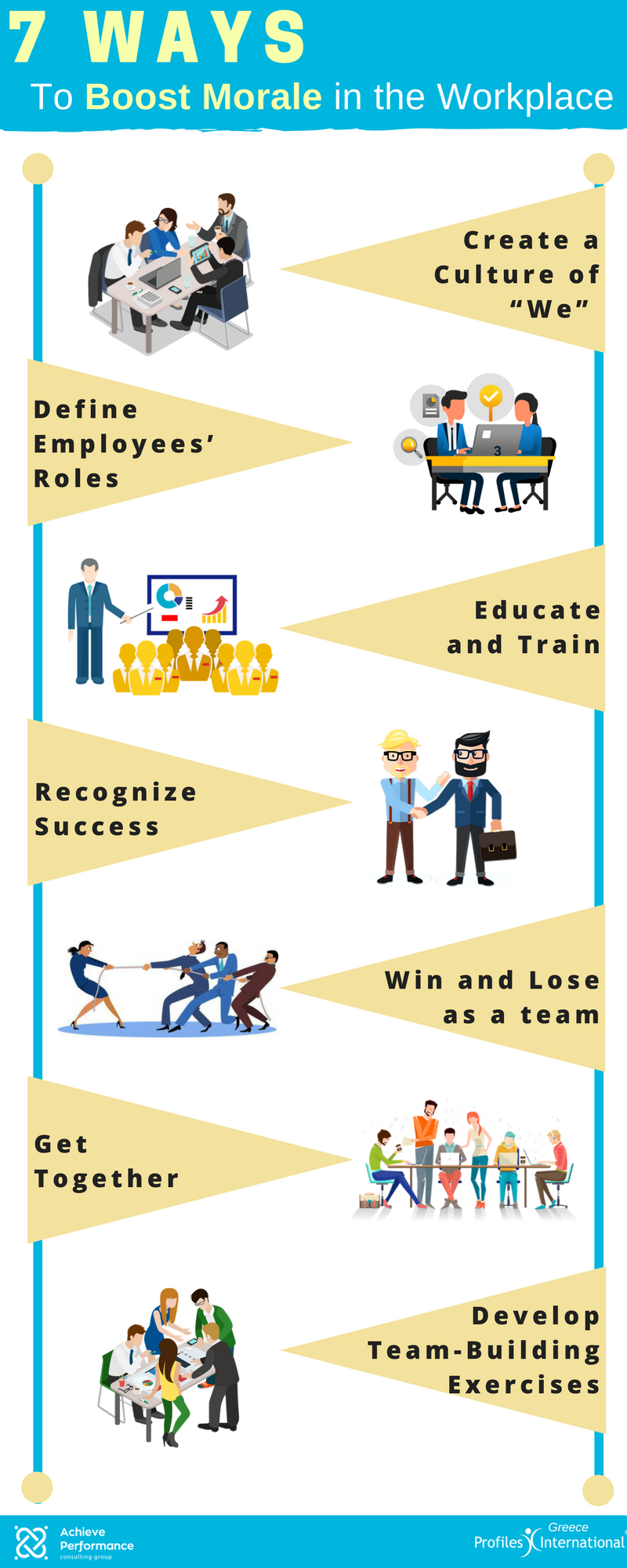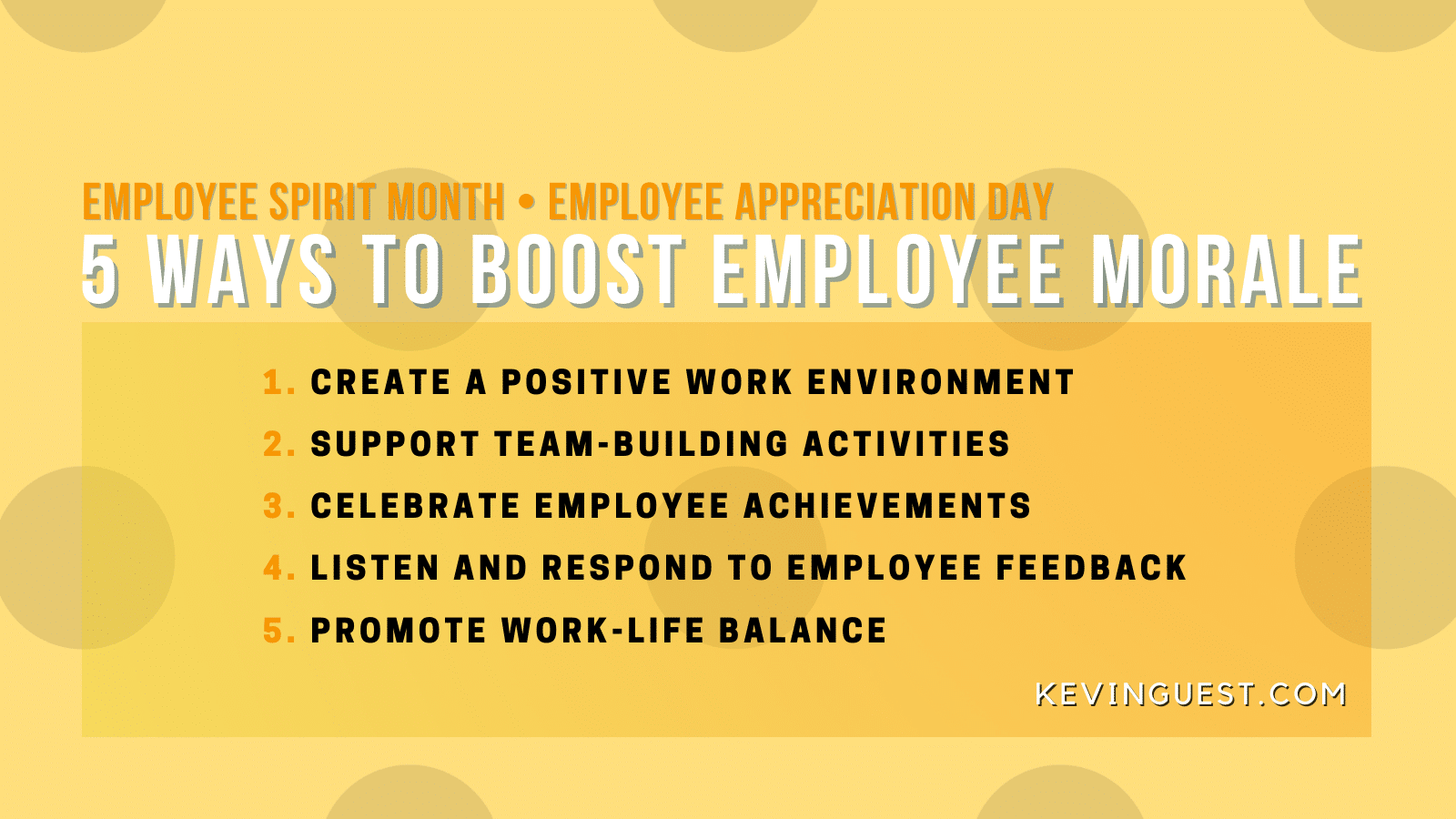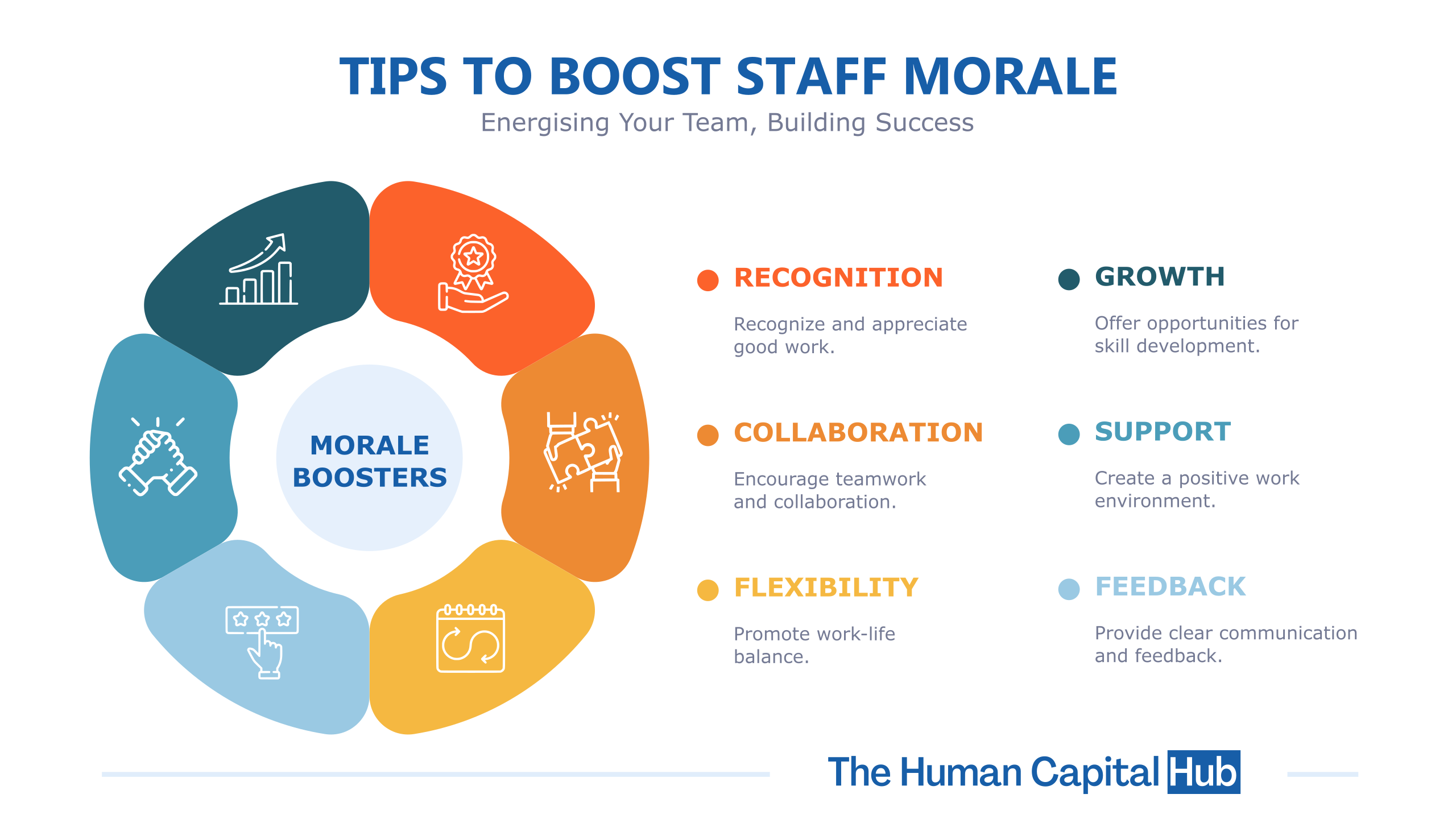Best Ways To Boost Morale At Work

Are your employees feeling the drag? In today's competitive landscape, employee morale directly impacts productivity, retention, and ultimately, your bottom line. This article is geared towards value-conscious business owners and managers seeking practical and cost-effective ways to boost morale without breaking the bank.
Understanding the Need for Morale Boost
High morale fosters a positive work environment, leading to increased engagement and output. Ignoring it can result in absenteeism, decreased quality, and a toxic atmosphere. Investing in your employees' well-being is an investment in your company's success.
Shortlist of Morale-Boosting Strategies (Tailored & Budget-Friendly)
For the Bootstrap Startup (Under $50/month)
- The "Appreciation Station": A shared whiteboard or online platform where employees can publicly acknowledge each other's contributions.
- Team Lunch Lottery: Weekly drawing for a free lunch for a small team (use budget-friendly options like pizza or sandwich platters).
- Flexible Friday: Offer employees the option to leave a couple of hours early on Fridays after core work is completed.
For the Growing Business (Under $200/month)
- Subscription Box Treats: Curated snack or coffee boxes delivered monthly to the office.
- "Skills Share" Workshops: Facilitate internal workshops where employees teach each other skills (e.g., photography, coding basics).
- Casual Day Fund: Invest in comfortable break-room seating and a coffee maker.
For the Established Enterprise (Under $500/month)
- Wellness Program Stipend: Offer a small stipend for employees to participate in wellness activities like gym memberships or yoga classes.
- Team-Building Events: Organize monthly team-building activities like escape rooms or volunteer events.
- Professional Development Fund: Allocate a small budget for each employee to attend online courses or conferences.
Detailed Reviews & Strategies
1. The Appreciation Station: Fostering Recognition
This strategy leverages the power of peer-to-peer recognition. A simple whiteboard or dedicated Slack channel allows employees to publicly acknowledge each other's contributions, fostering a sense of value and community.
Pros: Low cost, encourages positive reinforcement, builds teamwork. Cons: Requires active participation, can become stale if not managed properly.
Performance Score: 8/10 (Excellent for building a positive culture on a budget).
2. Team Lunch Lottery: Fueling Camaraderie
This tactic creates excitement and provides a tangible reward for teamwork. A weekly drawing for a free team lunch incentivizes collaboration and offers a welcome break from the workday.
Pros: Budget-friendly, provides a shared experience, fosters team bonding. Cons: May not appeal to all employees, can create jealousy if not managed fairly.
Performance Score: 7/10 (Good for team-building and showing appreciation).
3. Flexible Friday: Promoting Work-Life Balance
Offering employees the option to leave early on Fridays demonstrates trust and supports work-life balance. This simple perk can significantly boost morale and reduce burnout.
Pros: No direct cost, improves work-life balance, increases employee satisfaction. Cons: Requires careful planning to ensure coverage, may not be feasible for all roles.
Performance Score: 9/10 (Highly effective for improving employee well-being).
4. Subscription Box Treats: A Moment of Joy
Monthly snack or coffee boxes can inject a dose of fun and anticipation into the workplace. Choose boxes that cater to your employees' tastes and preferences for maximum impact.
Pros: Provides a tangible benefit, creates a positive atmosphere, caters to diverse preferences. Cons: Recurring cost, potential for waste if not carefully curated, dietary restrictions need to be considered.
Performance Score: 6/10 (Offers a treat but can become costly).
5. "Skills Share" Workshops: Investing in Growth
These internal workshops leverage the expertise within your team to provide professional development opportunities. Employees learn new skills, build relationships, and feel valued for their knowledge.
Pros: Low cost, encourages knowledge sharing, promotes employee growth. Cons: Requires organization and coordination, participation may vary, trainers need to be motivated.
Performance Score: 7.5/10 (A good way to foster learning and development).
6. Casual Day Fund: Comfort and Relaxation
A comfortable break room creates a space for employees to relax, recharge, and connect. Invest in comfortable seating, a coffee maker, and other amenities to enhance the break room experience.
Pros: Provides a relaxing space, encourages interaction, improves employee well-being. Cons: Requires initial investment, ongoing maintenance, potential for misuse.
Performance Score: 6.5/10 (Useful but can be costly depending on options).
7. Wellness Program Stipend: Supporting Health
Providing a stipend shows your company cares about employee health. Whether gym memberships or yoga, offering that extra funding could increase morale.
Pros: Enhances employee physical and mental health, demonstrates care. Cons: Budget implications, not all employees may use it, may be difficult to administer.
Performance Score: 8/10 (Effective for long-term employee well-being).
8. Team-Building Events: Strengthening Bonds
Escape rooms or volunteering strengthen bonds outside the workplace. These events increase trust, and collaboration through fun activities.
Pros: Fun and engaging, boosts teamwork, breaks down barriers. Cons: Budget-intensive, may not suit all employees, requires time away from work.
Performance Score: 7/10 (Great for team cohesion, but watch the cost).
9. Professional Development Fund: Investing in Futures
By investing in courses and conferences, employees grow professionally. It shows you value their contribution and career growth.
Pros: Enhances skills, boosts employee engagement, increases loyalty. Cons: Budget-heavy, may not see immediate results, selection process needed.
Performance Score: 9/10 (Excellent for employee retention and growth).
Side-by-Side Specs Table with Performance Scores
| Strategy | Cost (Monthly) | Pros | Cons | Performance Score (Out of 10) |
|---|---|---|---|---|
| Appreciation Station | $0 | Low cost, builds teamwork | Requires active participation | 8 |
| Team Lunch Lottery | $25 - $50 | Budget-friendly, shared experience | May not appeal to all | 7 |
| Flexible Friday | $0 | Improves work-life balance | Requires careful planning | 9 |
| Subscription Box Treats | $50 - $100 | Tangible benefit, positive atmosphere | Recurring cost, potential for waste | 6 |
| Skills Share Workshops | $0 - $20 | Encourages knowledge sharing | Requires organization | 7.5 |
| Casual Day Fund | $50 - $150 | Provides a relaxing space | Requires initial investment | 6.5 |
| Wellness Program Stipend | $100 - $200 | Enhances physical and mental health | Budget implications | 8 |
| Team-Building Events | $200 - $400 | Fun and engaging, boosts teamwork | Budget-intensive | 7 |
| Professional Development Fund | $200 - $500 | Enhances skills, boosts engagement | Budget-heavy | 9 |
Practical Considerations
When implementing these strategies, consider your company culture, employee demographics, and budget constraints. What works for one organization may not work for another. It's essential to tailor your approach to your specific needs.
Communication is key. Clearly communicate the purpose and benefits of any morale-boosting initiatives to your employees. Solicit feedback and be open to adjusting your strategies as needed.
Remember, consistency is crucial. Sporadic or half-hearted efforts can be more damaging than doing nothing at all. Commit to regularly implementing and evaluating your morale-boosting strategies to ensure they are effective.
Conclusion
Boosting morale doesn't require extravagant spending. By thoughtfully implementing cost-effective strategies, you can create a more positive, engaging, and productive work environment. Consider your company's specific needs and budget, and choose the approaches that are most likely to resonate with your employees.
Ultimately, investing in employee morale is an investment in your company's long-term success.
Call to Action
Ready to transform your workplace? Start small by implementing one or two of the strategies discussed in this article. Track your results and adjust your approach as needed. Download our free morale-boosting checklist to get started today!
Frequently Asked Questions (FAQ)
Q: How often should I implement morale-boosting activities?
A: Aim for regular and consistent activities, such as weekly recognitions or monthly team events. The frequency will depend on your budget and the scale of the activities.
Q: How do I measure the effectiveness of my morale-boosting efforts?
A: Track key metrics such as employee satisfaction scores, absenteeism rates, and productivity levels. Conduct regular employee surveys and solicit feedback to gauge the impact of your initiatives.
Q: What if my employees don't participate in morale-boosting activities?
A: Consider offering a variety of activities to cater to different interests and preferences. Make participation voluntary and create a culture where employees feel comfortable engaging.
Q: How can I get leadership buy-in for morale-boosting initiatives?
A: Present a clear business case that demonstrates the link between employee morale and key performance indicators. Highlight the potential ROI of investing in employee well-being.
Q: What is the most cost-effective way to boost employee morale?
A: Implementing simple, low-cost strategies such as public recognition, flexible work arrangements, and opportunities for professional development can be highly effective.


















